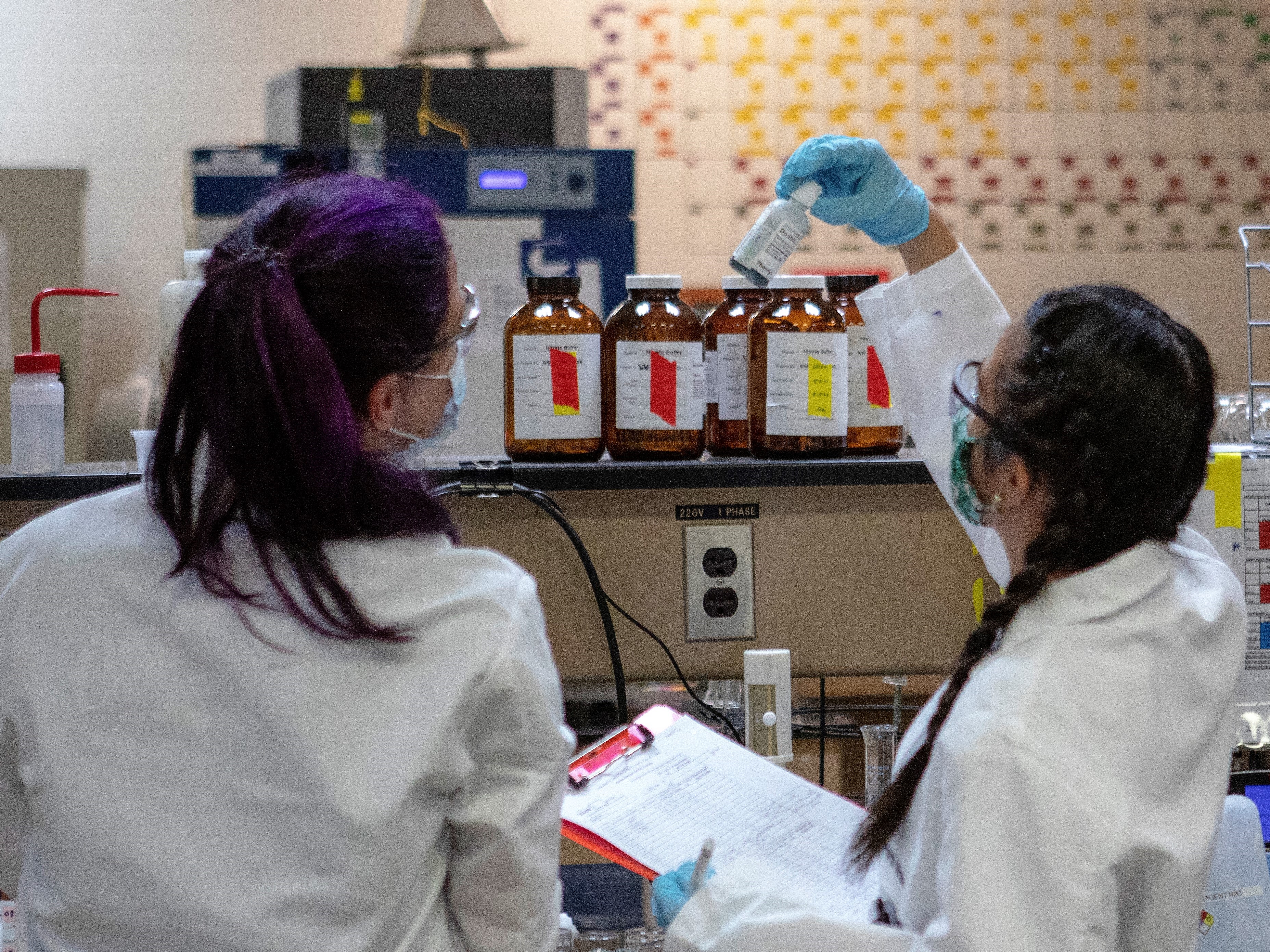

Treatment plant, laboratory, and emergency management staff practice for cyanotoxin event
AUSTIN – With concern about harmful algal blooms in Lady Bird Lake during the warm summer months, Austin Water remains vigilant for cyanotoxin threats to our drinking water. The utility continues to test raw source water from Lakes Austin and Travis, as well as treated drinking water from the Ullrich, Davis, and Handcox Water Treatment Plants for cyanobacteria and cyanotoxins. Austin Water began testing for cyanotoxins in 2015. Since monitoring began, there has never been a detection of cyanotoxins above the EPA health advisory level in our raw source water or treated drinking water.
Cyanobacteria, also called blue-green algae, are microscopic organisms found naturally in all types of water. In warm, nutrient-rich waters, cyanobacteria can multiply quickly, creating algal blooms that spread across the water’s surface and potentially to drinking water intakes at water treatment plants on Lakes Austin and Travis, the source of Austin’s drinking water. Some cyanobacteria in algal blooms may produce toxins called cyanotoxins that can make people and their pets sick.
As part of Austin Water’s overall resiliency efforts, enhanced treatment protocols were developed based on Environmental Protection Agency (EPA) guidance to be prepared for rapid response. Today, Austin Water Incident Management Team and treatment plant staff will conduct an emergency drill to practice implementing those protocols and be prepared if a cyanotoxin event were to occur.
The Austin Water treatment team and laboratory scientists have also taken steps to increase monitoring capabilities for cyanobacteria and cyanotoxins. Some of the measures that have been put in place to quickly respond include:
- Two years ago, Austin Water invested in leading-edge equipment so that in-house testing could be conducted. This allows results to be available within 24 hours instead of waiting up to several weeks for analyses from contract labs.
- Last year, laboratory testing was conducted and confirmed that Austin Water's conventional treatment processes and facilities effectively remove cyanobacterial cells. Austin Water’s treatment plants are also equipped to rapidly feed additional chlorine, Powdered Activated Carbon (PAC), and sodium permanganate to remove cyanotoxins from drinking water if they are detected.
- Austin Water is committed to monitoring for the lowest threshold levels set for two cyanotoxins by EPA Health Advisories. This helps protect the health of all Austin Water customers.
From May through October, the peak season for harmful algal blooms, tests for the presence of cyanobacteria are conducted twice per week but will occur more frequently if there are indications of algae that could produce cyanotoxins. As an extra-precautionary measure, Austin Water also routinely monitors for cyanotoxins, even when there is no indication of the cyanobacteria that produces these toxins. Current tests are non-detect for cyanotoxins in raw source water or treated drinking water.
“Austin Water remains vigilant with the health and safety of our customers top of mind. Our highest priority is for our water to continue to be safe to drink.” said Austin Water Director Shay Ralls Roalson. “We take this threat very seriously, and I’m proud of the proactive measures our laboratory analysts and treatment team have put in place to detect and treat for cyanotoxins.”
For more information on cyanotoxins and current monitoring results, visit Harmful Algal Blooms.
###

